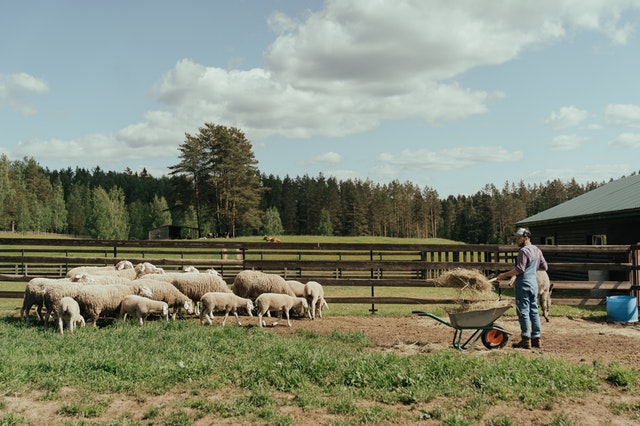Sheep yards are a critical part of any successful sheep farming operation. They are designed to provide a safe and efficient environment for managing the sheep, including activities such as shearing, dipping, and drafting. When constructing sheep yards, it is essential to consider the animals’ welfare, ensure the safety of workers, and create a functional space. In this article, we will discuss nine key considerations when building safe and efficient sheep yards.

Layout Planning
Planning the layout of a sheep yard is a crucial step in the construction process. A well-designed layout will allow for the efficient and safe movement of both sheep and workers. The location of the race and drafting gates, the size and shape of the yard, and the placement of the handling equipment should all be taken into account when planning the layout. A functional and efficient layout will help to increase productivity and reduce stress in the animals.
Adequate Drainage
Effective drainage is essential to prevent the accumulation of water and mud in the yard. It is important to create a suitable drainage system to ensure the animals’ safety and well-being. A well-designed drainage system will reduce the risk of accidents and create a healthy environment for the sheep.
Strong and Effective Fencing
Fencing is a critical component of stockyards. A sturdy fence will prevent the sheep from escaping, protect them from predators, and create a safe environment for both the animals and the workers. The fence’s gaps should be small enough to prevent the sheep from getting their heads stuck, and the fence’s height should be high enough to prevent the animals from jumping over.
Sufficient Space
Providing sufficient space in the sheep yard is crucial to create a comfortable and safe environment for the animals. Overcrowding can lead to stress, illness, and decreased productivity. It is important to ensure that there is enough space for the sheep to move around and rest comfortably.
Proper Lighting
Proper lighting is essential for the safety and comfort of both the animals and the workers. Adequate lighting will enable efficient movement and handling of the animals, reducing stress and increasing productivity. Natural lighting is also essential, as it can positively impact the animals’ behavior and health.
Gate Placement
Gate placement is a critical factor in designing a functional and efficient sheep yard. Gates should be placed strategically to allow for easy movement and handling of the animals. A poorly placed gate can cause unnecessary stress and delays, leading to a decrease in productivity. Proper gate placement will enable efficient drafting and handling of the animals.
Adequate Shelter
Providing adequate shelter is crucial in stockyards to protect the animals from extreme weather conditions. Providing shade in the summer and protection from the elements in the winter will ensure the animals’ comfort and health. Adequate shelter can also reduce stress and promote productivity.
Sufficient Water Supply
A sufficient water supply is essential for the animals’ well-being in stockyards. Sheep require clean, fresh water to remain hydrated and healthy. The water supply should be easily accessible and regularly maintained to ensure optimal animal health.
High-Quality Materials
Using high-quality materials is necessary to ensure that sheep yards are sturdy, long-lasting, and functional. The use of poor-quality materials can lead to costly repairs and replacements and negatively impact the operation’s profitability. Investing in high-quality materials will ensure that the yard is safe, efficient, and productive for years to come.
Avoid the Mistakes
In conclusion, building safe and efficient sheep yards is crucial for the success of any sheep farming operation. Avoiding common mistakes and taking these considerations into account can result in a safe, efficient, and productive environment for managing sheep.



